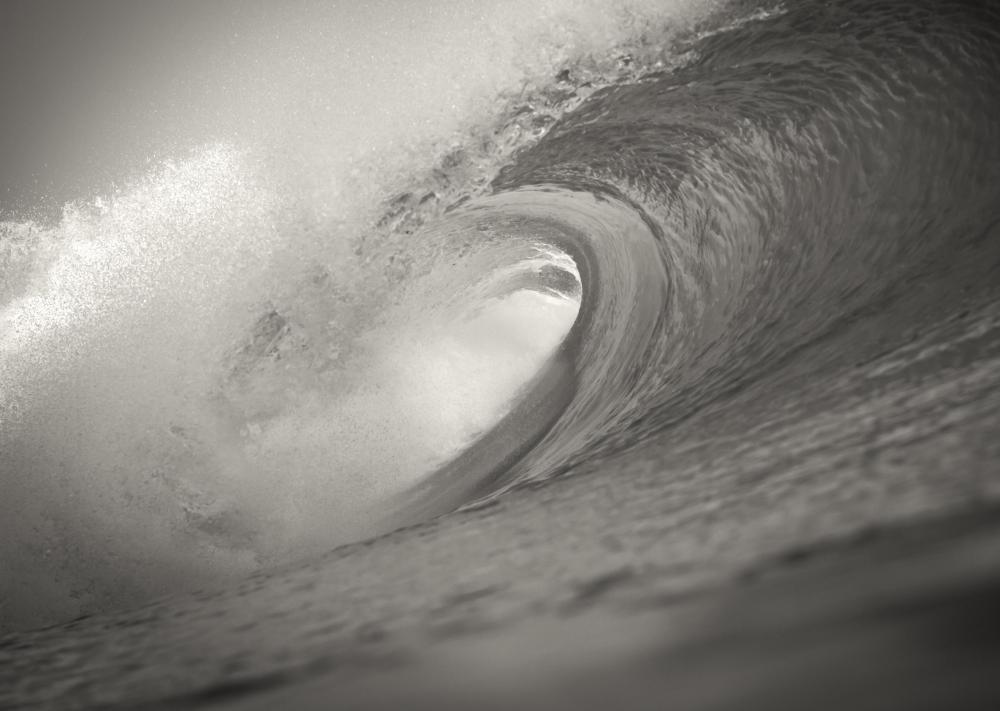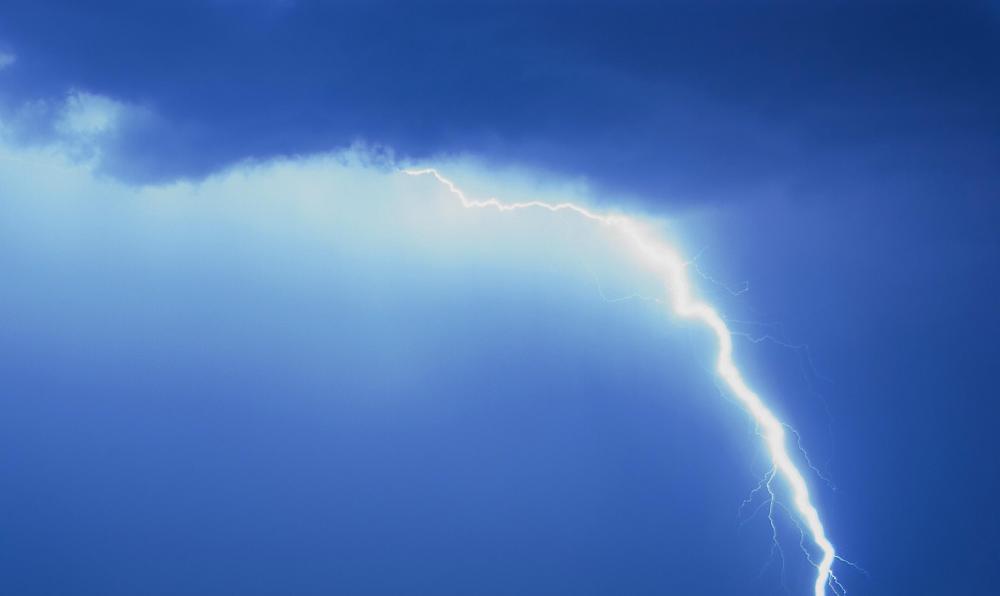At AllThingsNature, we're committed to delivering accurate, trustworthy information. Our expert-authored content is rigorously fact-checked and sourced from credible authorities. Discover how we uphold the highest standards in providing you with reliable knowledge.
What is the Difference Between a Hurricane, Cyclone, and Typhoon?
Hurricanes, typhoons, and tropical cyclones are different names for the same type of storm. A tropical cyclone is called a hurricane in the North Atlantic Ocean, South Pacific Ocean, or the Northeast Pacific Ocean on the eastern side of the dateline. A typhoon occurs in the Northwest Pacific Ocean west of the dateline. In other parts of the world, these storms are called severe tropical cyclones.
A hurricane, then, is a cyclonic storm with maximum sustained winds over 74 mph (64 knots; 119 kph). These storms are then further classed according to strength by the Saffir-Simpson Scale. There are five strength categories, with a Category 5 storm rating maximum sustained winds over 156 mph (136 knots; 251 kph).

This type of severe storm generally starts as an organized band of convection, or thunderstorms, called a tropical wave. When conditions are favorable, the wave starts to further organize and strengthen. Convection increases, and the wave starts taking on cyclonic characteristics. If strengthening continues, it develops an eye and eyewall and soon becomes a hurricane. Favorable conditions for storm development include the system being over very warm water and in an environment with little wind shear. Wind shear is bad for a storm because because it sends winds in the opposite direction, thereby inhibiting the cyclone’s formation.

A cyclone itself is often a generic name for any kind of violent windstorm, and particularly in the Midwestern United States, is the name for a tornado. A tornado and a hurricane are two entirely different storms, however. A tornado is usually the result of a mesocyclone, or severe thunderstorm, over land, although a tropical cyclone that makes landfall can spawn tornadoes. They are also smaller, short-lived storms, while a hurricane covers several hundred square miles or kilometers and may last for several days over water.
The hurricane quickly loses strength when it makes landfall because it is deprived of the heat and moisture from the ocean water keeping it alive. One that passes over land and goes back into the ocean, however, may regenerate.

Although most people think of a tropical cyclone as being primarily a wind storm, its real damage is usually caused by flooding. This was evident in 2005, when Hurricane Katrina struck the Louisiana and Mississippi Gulf Coasts. The storm had dropped to a Category 3 by landfall, but the storm surge in front of it was driven by the storm when it was a Category 5. The storm surge was well over 20 feet (6 meters) in some areas, and wiped out thousands of homes in its path.

The National Weather Service’s Tropical Prediction Center tracks storms in the North and East Atlantic, and in the Eastern Pacific Oceans. Their Web site provides a wealth of information on the formation, tracking and forecasting storms, as well as statistics from past years.
Frequently Asked Questions
What is the basic difference between a hurricane, cyclone, and typhoon?

The primary difference lies in their location. Hurricanes form in the North Atlantic, central and eastern North Pacific. Cyclones occur in the South Pacific and Indian Ocean, while typhoons develop in the Northwest Pacific. Despite their different names, they are all tropical cyclones and share similar characteristics such as strong winds and heavy rain.
Are hurricanes, cyclones, and typhoons measured differently?

No, hurricanes, cyclones, and typhoons are measured using the same scale: the Saffir-Simpson Hurricane Wind Scale. This scale categorizes these storms from Category 1 to 5 based on their sustained wind speeds. Regardless of where they occur, the intensity of these storms is assessed with the same criteria.
Why do hurricanes, cyclones, and typhoons have different names?
The naming convention is based on their geographical location to help local populations better understand warnings and communicate effectively about these storms. The World Meteorological Organization maintains separate lists of names for different regions, which are familiar to the people living there, aiding in clear communication during emergencies.
Can a hurricane become a typhoon or cyclone if it crosses into another region?
A tropical cyclone does not change its name if it crosses from one ocean basin to another. Its original name and classification remain the same to maintain consistency in tracking and reporting. However, such occurrences are rare due to the geographical barriers and differing environmental conditions between basins.
What are the peak seasons for hurricanes, cyclones, and typhoons?
Hurricanes in the Atlantic typically peak from June to November, with the highest activity in September. Cyclones in the South Pacific and Indian Ocean usually occur from November to April. Typhoons in the Northwest Pacific can arise year-round but are most common from May to October, peaking in late summer.
How do hurricanes, cyclones, and typhoons impact the environment and wildlife?
These storms can cause significant environmental damage, such as habitat destruction, erosion, and water contamination. Wildlife may suffer from loss of food sources, nesting sites, and increased vulnerability to predators. However, they can also bring beneficial rain to ecosystems and help maintain the health of coastal wetlands by redistributing nutrients and sediments.
AS FEATURED ON:
AS FEATURED ON:
















Discussion Comments
In Australia, all cyclonic oceanic storms are known as "Cyclones", "Tropical Cyclones", or "Severe Tropical Cyclones".
"Hurricane" comes from the Arawak name of a primary god of wind, "Huracan", which was later incorporated into Spanish, and then English.
Finally, i know the difference.
I think the reason for the different names is historical. If I recall correctly, 'typhoon' comes from Chinese Tai Fun or some such, which means 'great wind'. Presumably, western sailors encountering hurricanes in the China Sea didn't recognize them as such, and heard the Chinese referring to them by this term. When they were later recognized as such, the term had already stuck.
'Cyclone' refers to the fact that the storm spins. A hurricane is basically a massive storm traveling clockwise or anticlockwise (depending on which hemisphere it's in), and it has a calm(er) inner part called the 'eye'. It's shaped like a torus - kind-of a donut, really massive though.
A tornado (from Spanish - a thing that is turning) - is a much smaller storm, typically funnel-shaped and faster-moving, not having a distinct eye as such, or rather, the eye is proportional to the height and size of the tornado. A tornado at sea is called a 'sea spout'.
I'm not sure where the term 'hurricane' comes from. I think it's spanish too, presumably because it was used to refer to such storms in the Spanish Main.
So: Cyclone is the general term, Hurricane is the Atlantic/South Pacific term, and Typhoon is the north Pacific term.
Thank you for the explanation. Thank you for taking the time to answer. --Forcier
Excellent explanation and response to my question! I appreciate it.
thank you for the help.
thanks for the help!
@3: They only spin in different directions because of what hemisphere they are on. They both turn in the direction of the earth - counter clockwise in the northern hemisphere and clockwise in the southern hemisphere.
yes, if they are all the same, why not call it only one name? just a thought.
i think this is very interesting and i wish to browse more of his website!!
I haven't read any of the comments, so my addition is probably already mentioned. The fact is that hurricanes and typhoons, aside from occurring in different locations, also twist in different directions.
I believe cyclones can be further subdivided. A "severe tropical cyclone" is the name given to storms in the Southwest Pacific Ocean west of the 160 degrees E longitude line or Southeast Indian Ocean east of the 90 degree E longitude line. Storms originating in the North Indian Ocean are called "severe cyclonic storms" and those storms in the Southwest Indian Ocean are called "tropical cyclones". Why make it easy and have the same name? ;)
Post your comments